[Title]
The motion of charged particles in an electric field is a key and challenging topic in electric field problems. This part integrates knowledge of kinematics, Newton’s laws, curved motion, and energy, making it an excellent question to assess students’ comprehensive abilities. The principle of the oscilloscope is a typical problem within this content, and students often struggle to grasp the principle of the oscilloscope, approaching the problem somewhat blindly. Below, we will analyze the working principle of the oscilloscope.
[Question]
The figure shows a schematic diagram of a vacuum oscilloscope. Electrons are emitted from the filament K (initial velocity can be neglected) and are accelerated by the voltage U1 between the filament and the plate A, then they are shot out along the center line KO through the center hole of plate A and enter the deflection electric field formed by the two parallel metal plates M and N (the deflection electric field can be considered a uniform electric field). The speed of the electrons entering the electric field between M and N is perpendicular to the direction of the electric field. After passing through the electric field, they hit point P on the phosphorescent screen. The voltage between plates M and N is U2, the distance between the plates is d, the length of the plates is L, and the distance from the right edge of the deflection electric field to the phosphorescent screen is L0. The mass of the electrons is m, and the charge is e. Neglect the gravitational force acting on the electrons and the interaction forces between them.
(1) Find the speed of the electrons as they pass through plate A.
(2) Find the lateral displacement OP of the electrons hitting the phosphorescent screen.
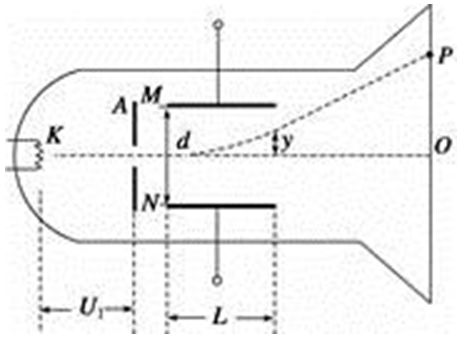
[Analysis]
(1) Let the speed of the electrons after being accelerated by voltage U1 be v0. By the work-energy theorem, we have:

The solution yields:
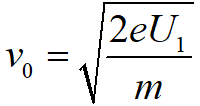
(2) The electrons move in a uniform straight line in the direction of the plates and undergo uniformly accelerated linear motion in the direction of the electric field with an initial speed of zero. Let the electric field strength of the deflection electric field be E. The time the electrons spend in the deflection electric field is t, and the acceleration is a. The lateral displacement of the electrons when they leave the deflection electric field is y. According to Newton’s second law and kinematic equations, we have:
 , yielding:
, yielding:
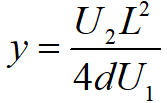
Using similar triangles, we find:
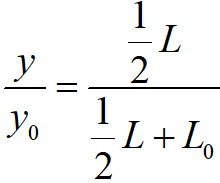 , yielding:
, yielding:

[Extension]
As shown in Figure A, the principle diagram of the oscilloscope consists of an electron gun, deflection electrodes (XX′ and YY′), and a phosphorescent screen, all contained in a vacuum. When the electron gun is powered, if no voltage is applied to both the scanning electrode XX′ and the deflection electrode YY′, the electron beam will hit the center point O of the phosphorescent screen.
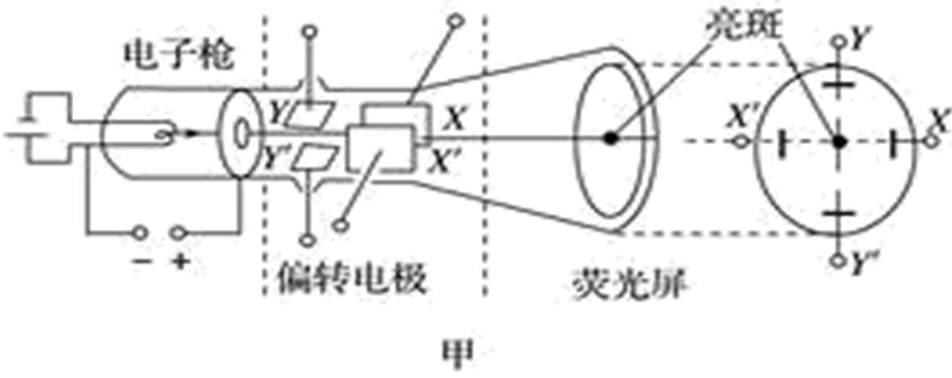
(1) Charged particles are accelerated in __________ and deflected in __________;
(2) If UYY′>0, UXX′=0, the particles will shift towards the __________ plate. If UYY′=0, UXX′=0, the particles will hit the phosphorescent screen at point __________. If UYY′=0, UXX′>0, the particles will shift towards the __________ plate;
(3) If the voltage changes on the deflection electrodes XX′ and YY′ as shown in Figures B and C, which image will be displayed on the screen?

[Analysis]
(1) According to the principle of the oscilloscope, electrons are accelerated in the electron gun and deflected in XX′ and YY′.
(2) When voltage is applied to the deflection electrode YY′ and UYY′>0, UXX′=0, the potential of Y is higher than Y′, so the electrons move towards the higher potential, which means the particles shift towards the Y plate. If no voltage is applied to both deflection electrodes, and UYY′=0, UXX′=0, the particles will hit the phosphorescent screen at point O. When voltage is applied to the deflection electrode XX′ and UYY′=0, UXX′>0, the potential of X is higher than X′, so the electrons move towards the higher potential, which means the particles shift towards the X plate.
(3) Since the voltage applied to the electrode XX′ is the scanning voltage and the voltage applied between electrodes YY′ is the signal voltage, and since the signal voltage has the same period as the scanning voltage, the image displayed on the phosphorescent screen will be B.
Can you draw the oscilloscope display images when the scanning voltage UXX′ has periods of t1 and 4t1?
[Analysis]
The principle of the oscilloscope problem first requires a clear distinction of the motion of charged particles under the influence of the deflection electrodes XX′ and YY′, then analyze the deflection in each direction using the independence of forces and motion, and finally, superimpose them. To determine the displayed image, it is essential to clarify the scanning period and then observe the number of signal voltage changes within one scanning period to determine the image displayed on the screen.
Welcome to Submit Articles
Email: [email protected] (Physics Learning Research Submission Initial Letters)
Please refer to the “About Us” section under “Communication and Cooperation” in the “Physics Learning Research” WeChat official account for specific requirements, or directly reply with the word ‘Submit’ in the WeChat official account, and we will reply with the specific requirements!
Reviewed by: Zhang Chunli, Shi Yap
Edited by: Shi Ming

